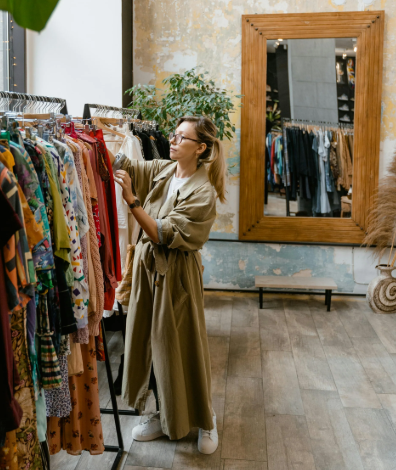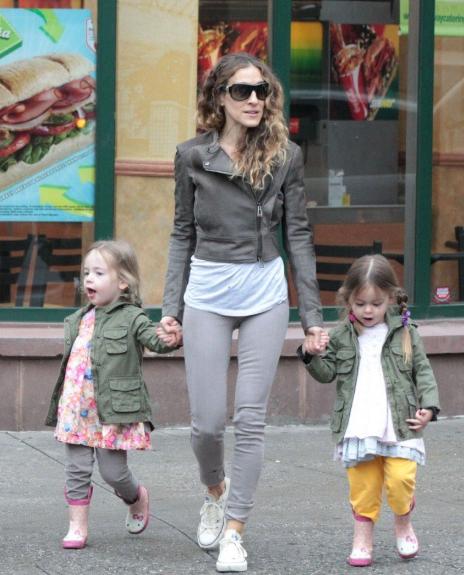The Lasting Influence of Vintage Clothing on Today’s Fashion Scene

Vintage clothing has left an undeniable mark on modern fashion, blending nostalgia with contemporary trends in unique ways. This piece explores how the charm of the past continues to shape fashion today, especially in terms of sustainability, self-expression, and quality.
The Charm of Vintage and Retro Fashion
Vintage and retro fashion hold a special place in modern wardrobes. The appeal lies not just in their aesthetic, but in their ability to evoke memories of past eras. With vintage fashion influencers and celebrities championing these styles, it’s no surprise that these trends have found their way into all corners of the fashion world, from high-end brands to everyday streetwear.
Vintage fashion’s reach is undeniable. It’s not only reflected in bridal and menswear but has also seen a resurgence in mainstream fashion, signaling a collective yearning for classic, timeless pieces. Sustainable brands now often incorporate these vintage elements, emphasizing the industry’s shift toward ethical consumption and mindful fashion choices.
Decades of Influence: Fashion’s Love Affair with the Past
The love for vintage extends across different decades, with modern designers continually turning to past styles for inspiration. Every few years, fashion revisits past decades, ensuring that styles from previous decades never truly fade away.
For example, the 1990s have made a significant comeback, thanks to the revival of vintage silhouettes like baggy jeans and oversized jackets. Meanwhile, vintage icons from earlier decades continue to inspire a new generation of trendsetters. Vintage fashion isn’t just about style; it’s about shaping cultural narratives and expressing personal identity.
The Evolution of Vintage Fashion on the Runway
Vintage clothing has left an indelible mark on the runway, with many designers reinterpreting pieces from the past. The nostalgic flair of vintage styles often appears in collections that evoke feelings of authenticity and heritage. Beyond the runway, this influence extends to street style, music videos, and even red carpet looks, where celebrities frequently turn to vintage pieces to make bold statements.
Fashion exhibitions and costume designs also draw heavily from vintage elements, further highlighting their lasting cultural significance. Whether through the subtle incorporation of vintage pieces in high-end fashion or a direct nod to specific historical periods, vintage fashion remains a vital part of the modern fashion narrative.
Reimagining Iconic Vintage Pieces for the Modern Era
Contemporary designers are not simply reviving old styles but are modernizing them for today’s fashion-forward consumer. These reinterpretations breathe new life into classic pieces, blending nostalgia with cutting-edge design. The ongoing fascination with vintage pieces is driven by a desire to blend the past and present, giving rise to new trends that merge both worlds.
This fusion of old and new elevates the overall aesthetic of contemporary fashion, proving that the past is far from forgotten. It serves as a wellspring of inspiration, offering endless creative possibilities for designers.
Vintage Fashion’s Role in Sustainability
Vintage clothing isn’t just about nostalgia; it’s also a cornerstone of the sustainable fashion movement. With the fast fashion industry contributing to significant environmental damage, choosing vintage pieces helps reduce the waste associated with mass-produced garments. Vintage shopping supports a circular economy, where items are reused and given new life, lowering carbon emissions and fostering a more eco-conscious approach to fashion.
By reducing textile waste and embracing timeless designs, vintage fashion encourages a shift toward mindful consumption. This makes vintage clothing a valuable asset not only for style but for environmental impact.
Understanding the Difference Between Retro and Vintage
While often used interchangeably, retro and vintage refer to different concepts. Vintage typically refers to actual garments from past decades, representing authentic styles that have stood the test of time. Retro, on the other hand, refers to new clothing designed to mimic or evoke the feel of past styles without being an original piece.
On the runway, the lines between retro and vintage can blur, as designers reinvent past classics. Recognizing this distinction helps us better appreciate the influence each has on the modern fashion landscape.
Popular Vintage Styles Reshaping Modern Fashion
The revival of vintage styles has brought back a host of iconic trends. The 1970s, for example, have seen a resurgence through wide-legged trousers and bold prints. The 1990s grunge movement has made its way into streetwear with oversized sweaters, plaid shirts, and distressed denim.
Vintage accessories, such as brooches, pearl necklaces, and even corsets, continue to influence modern outfits. The 1980s’ power dressing, with its oversized blazers and shoulder pads, has found a place in current trends, while vintage-inspired sportswear and athleisure continue to dominate.
Vintage styles are also reappearing in wedding dresses and menswear, with lace details and classic tailoring taking center stage.
Addressing the Growing Popularity of Vintage Fashion
As vintage clothing continues to gain popularity, consumers may face challenges in their search for authentic pieces. Issues like size differences, product condition, and higher pricing are common. However, the rise of online marketplaces has made finding vintage clothes easier than ever, revolutionizing the shopping experience and supporting sustainability.
Emerging Trends in the Vintage Clothing Industry
The future of vintage fashion looks promising, with several key trends emerging. Sustainable fashion, the culture of thrifting, and upcycled clothing are all on the rise, alongside vintage-inspired accessories and retro revivals. As fashion recycling becomes more mainstream, it’s clear that vintage clothing will continue to influence how we dress for years to come.
Conclusion
Vintage clothing has proven to be much more than a fleeting trend. Its enduring influence continues to shape modern fashion, from the runway to everyday street style. Beyond the aesthetic appeal, vintage fashion plays a crucial role in promoting sustainability, offering a more ethical alternative to fast fashion.
The blend of nostalgia, creativity, and environmental consciousness ensures that vintage clothing remains a cornerstone of contemporary fashion, offering consumers a unique way to express individuality while making a positive impact on the planet.





